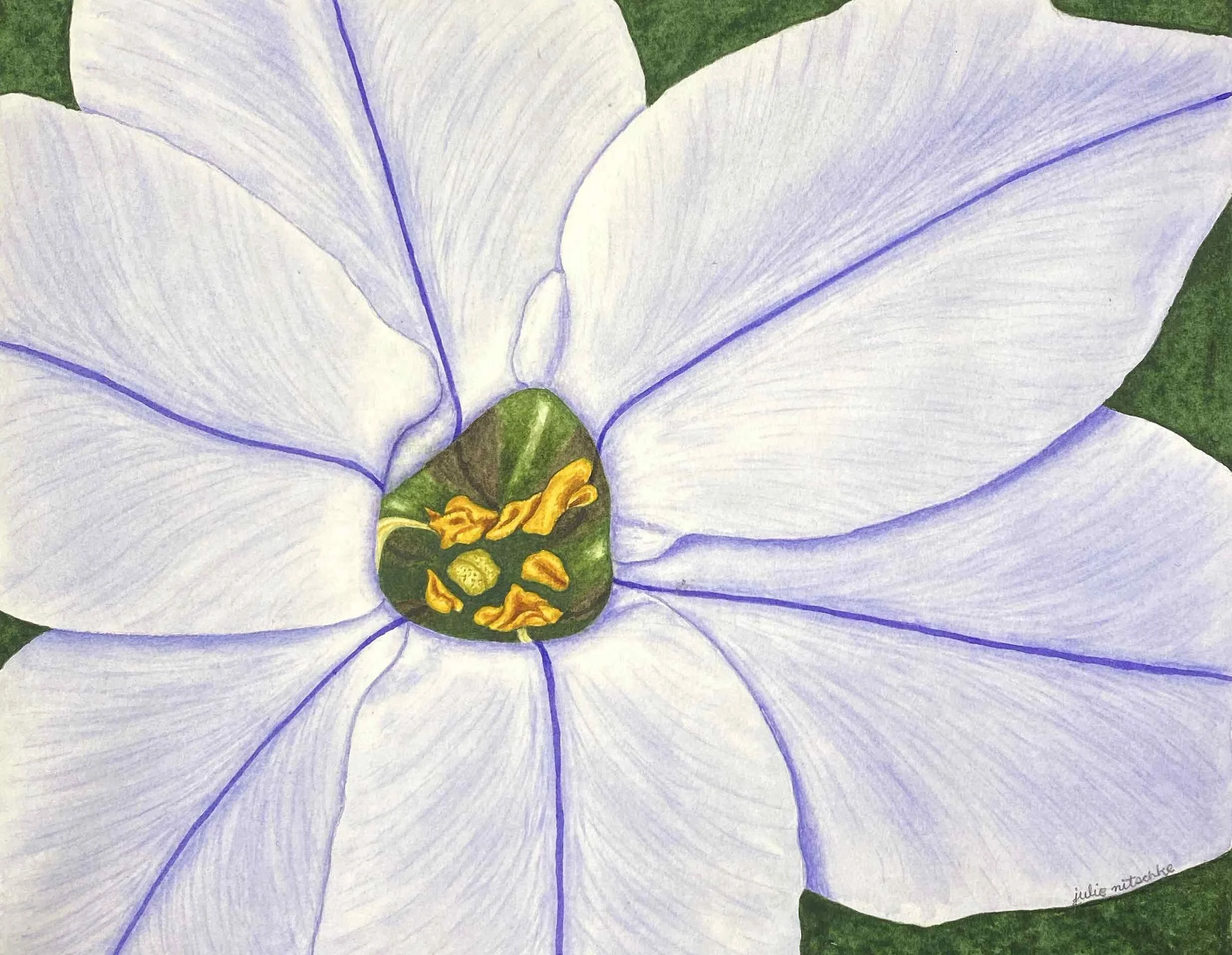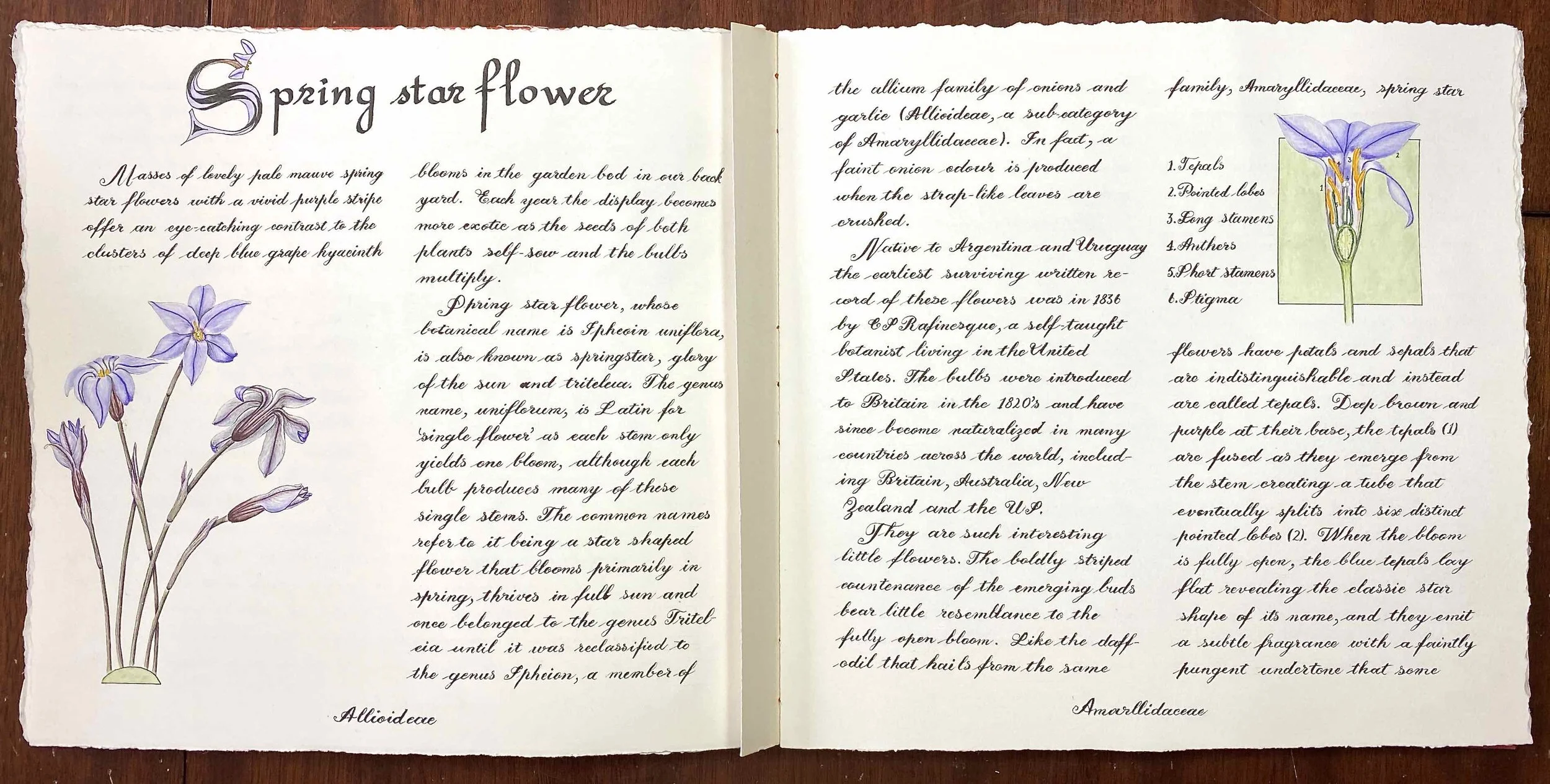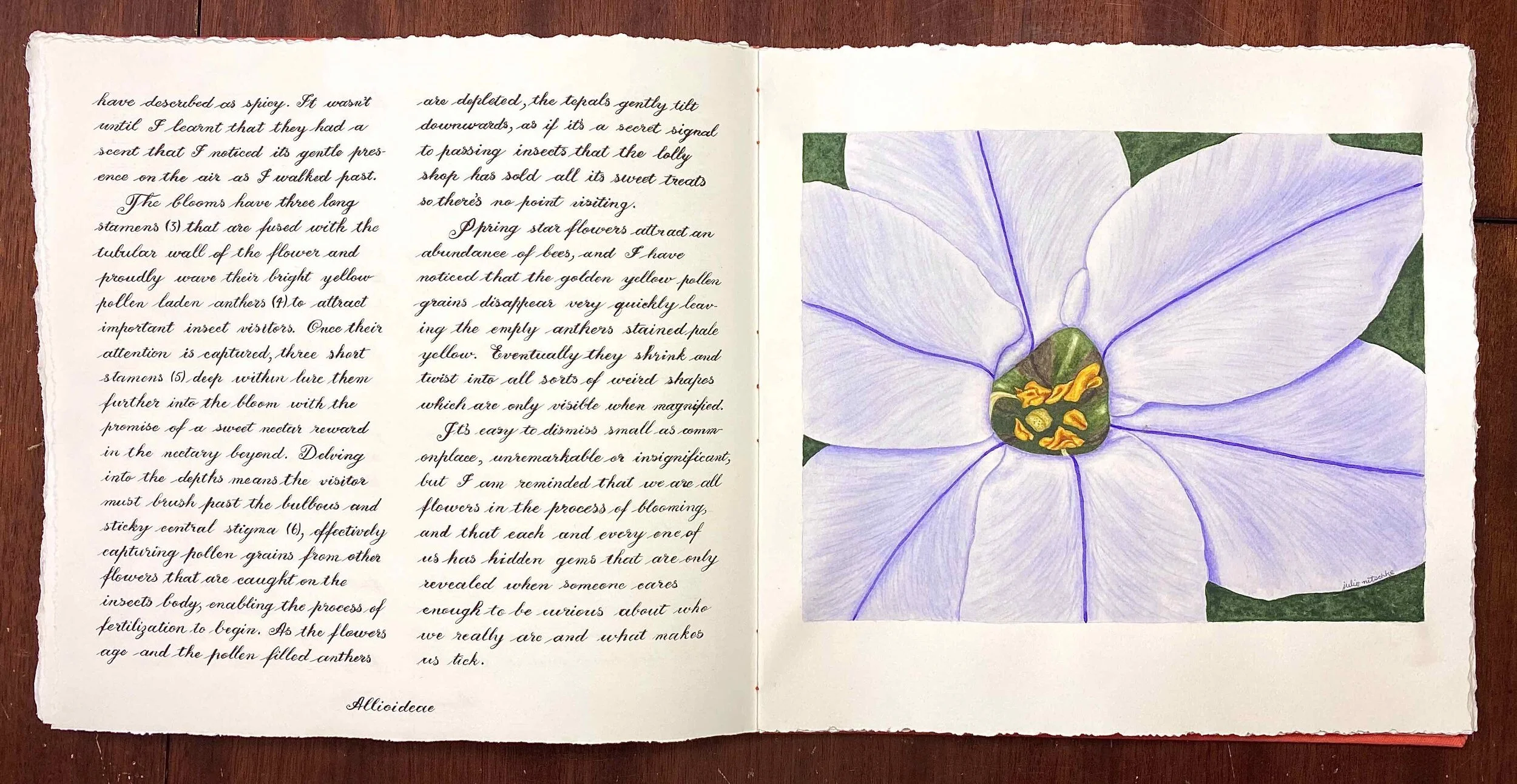Although winter is a time of introspection and quietness when much of nature turns inward whilst preparing for renewal in spring, many flowers are at their best during this time, bringing warmth and good cheer to cold grey days.
Masses of lovely pale mauve spring star flowers with a vivid purple stripe offer an eye-catching contrast to the clusters of deep blue grape hyacinth blooms in our garden during winter and early spring. The spring star flower buds begin to appear in the middle of July and by the first week of August look like a carpet of soft violet confetti. Each year the display becomes more exotic as the seeds of both plants self-sow and the bulbs multiply. They’re still in full swing now as clumps of bluebells start popping up amongst them, adding another harmonious colour to the mix.
Native to Argentina and Uruguay, the spring star flower, Ipheion uniflorum, is also known as springstar, glory of the sun and triteleia. Uniflorum is Latin for ‘single flower’ as each stem only yields one bloom, although each bulb produces many of these single stems. The common names refer to its star shaped flower that blooms primarily in spring, thrives in full sun and once belonged to the genus Triteleia until it was reclassified and joined the allium family of onions and garlic. In fact, a faint onion odour is produced when the strap like leaves are crushed.
They are such interesting little flowers. The boldly striped countenance of the emerging buds bear little resemblance to the fully open bloom. Like the daffodil that hails from the same family, spring star flowers have petals and sepals that are indistinguishable and instead are called tepals. Deep brown and purple at their base, the tepals are fused as they emerge from the stem creating a tube that eventually splits into six distinct mauve pointed lobes that lay flat when the bloom opens revealing the classic star shape of its name. They have a subtle fragrance that is sweet with a faintly pungent undertone that some have described as spicy, and with our dense planting I am able to enjoy the gentle presence of its scent on the air as I wander past them.
Inside this fascinating bloom, there are three long stamens that are fused with the tubular wall of the flower and proudly wave their bright yellow pollen laden anthers to attract important insect visitors. Plunging deep into the bloom to seek the sweet nectary treat, insects must pass the first three anthers where they collect pollen, then brush against the central bulbous sticky female stigma that captures pollen grains from the insect’s body, and finally collect more pollen from the three short stamens before reaching their reward. As the flowers age and the pollen filled anthers are depleted, the tepals gently tilt downwards, as if it’s a secret signal to passing insects that the lolly shop has sold all its sweet treats so there’s no point visiting.
The spring stars in our garden seem to attract an abundance of bees, and I have noticed that the golden yellow pollen granules disappear very quickly leaving the empty anthers stained pale yellow. Eventually they shrink and twist into all sorts of weird shapes which are only visible when magnified.
It’s interesting to contemplate why some flowers are full of life and colour during the introspective season whilst others go underground to recoup and regenerate, like recharging a battery, in readiness for their next phase of colour and exuberance. It’s fortunate that the world is graced with both, teaching us to appreciate their different ways of functioning, each with its unique and important contribution to the whole.


